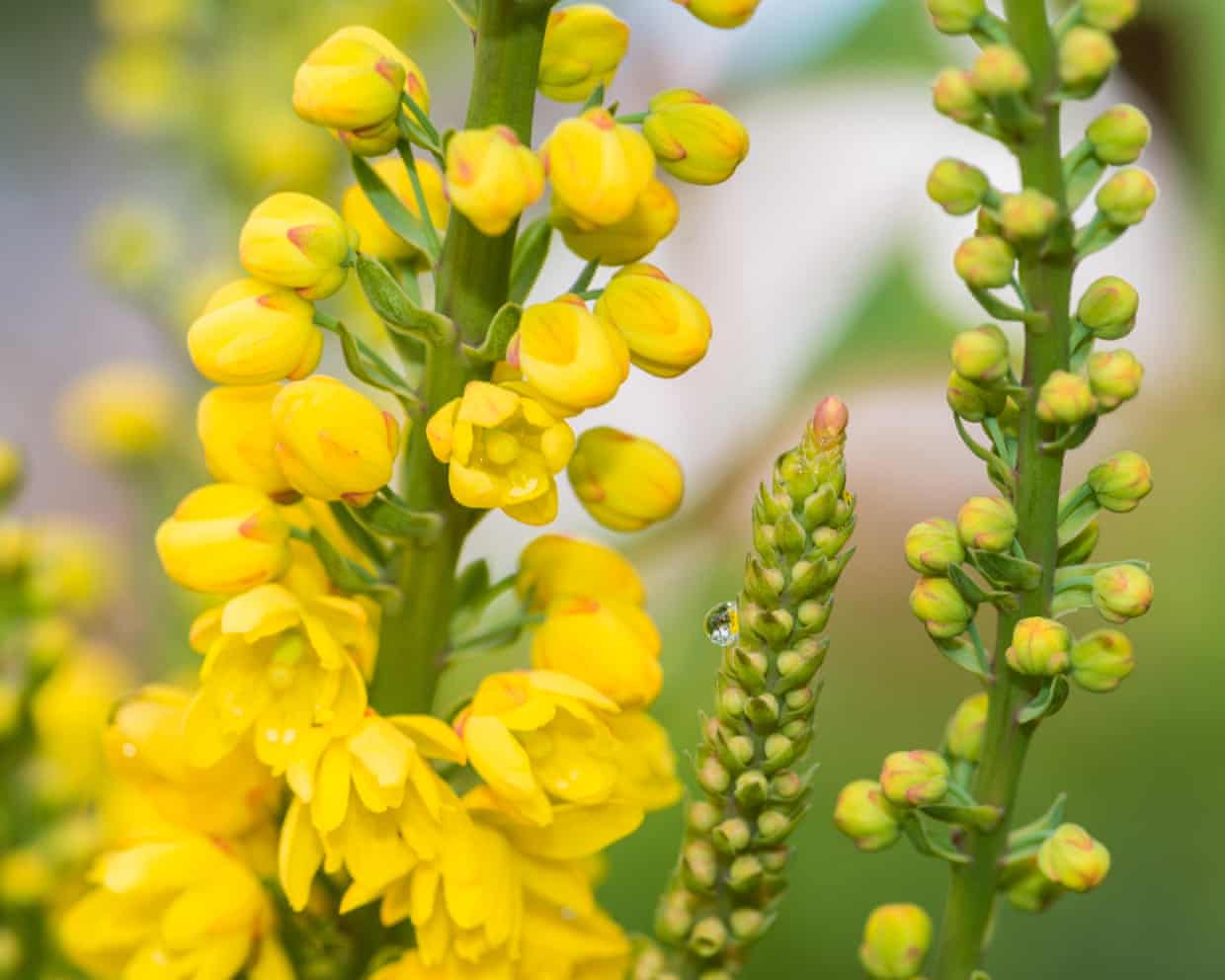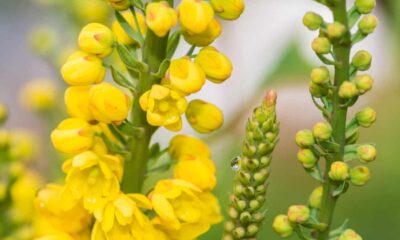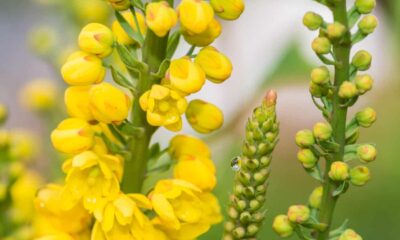Science
Flowers Use Surprising Tactics to Attract Pollinators

Flowers have evolved intricate mechanisms to attract pollinators, employing sensitive male reproductive parts known as stamens to engage insects in fascinating ways. Research has uncovered that hundreds of plant species utilize touch-sensitive stamen movements, leading to unexpected interactions with their pollinators. This elaborate strategy not only aids in reproduction but also conserves valuable resources such as nectar and pollen.
The flowers of the **Berberis** and **Mahonia** species present a unique approach. When insects approach these blooms to collect nectar, they encounter stamens that bend and release pollen directly onto the visitor’s face or tongue. This surprising action serves a dual purpose: it ensures that the pollinator makes only a brief stop, thereby preventing the flower from wasting its nectar and pollen on an extended visit. Upon leaving, the insect inadvertently transfers pollen to another flower, facilitating cross-pollination and enhancing genetic diversity.
In stark contrast, the **Catasetum** orchid employs a more aggressive strategy. As insects land on these flowers, they experience a sudden and forceful release of sticky pollen bags. This rapid action can be so powerful that it sends the insect flying out of the flower, with the pollen bags adhering to its body. This technique not only effectively disperses pollen but also increases the chances of successful fertilization when the insect visits other blooms.
Among the Australian flora, the **Stylidium** or triggerplant showcases an extraordinary mechanism for pollination. These plants feature a club-shaped organ that swings through 180 degrees in approximately 10 milliseconds when triggered by touch. This rapid movement smacks visiting insects with pollen while simultaneously receiving any pollen they may carry. After each encounter, the trigger resets quickly, preparing for the next pollinator that arrives.
Such adaptations highlight the diverse and dynamic strategies flowers employ to engage with their pollinators. By utilizing touch-sensitive mechanisms, these plants maximize their reproductive success while efficiently managing their resources. The intricate interactions between flowers and insects underscore the delicate balance of ecosystems, emphasizing the need for conservation efforts to protect these remarkable species and their environments.
Understanding these complex relationships not only enriches our knowledge of plant biology but also illustrates the critical role that pollinators play in sustaining biodiversity. As research continues to reveal more about these fascinating interactions, it becomes increasingly clear how vital it is to preserve the natural habitats that support both flora and fauna.
-

 World3 months ago
World3 months agoScientists Unearth Ancient Antarctic Ice to Unlock Climate Secrets
-

 Entertainment3 months ago
Entertainment3 months agoTrump and McCormick to Announce $70 Billion Energy Investments
-

 Science3 months ago
Science3 months agoFour Astronauts Return to Earth After International Space Station Mission
-

 Lifestyle3 months ago
Lifestyle3 months agoTransLink Launches Food Truck Program to Boost Revenue in Vancouver
-

 Technology2 months ago
Technology2 months agoApple Notes Enhances Functionality with Markdown Support in macOS 26
-

 Top Stories1 week ago
Top Stories1 week agoUrgent Update: Fatal Crash on Highway 99 Claims Life of Pitt Meadows Man
-

 Sports3 months ago
Sports3 months agoSearch Underway for Missing Hunter Amid Hokkaido Bear Emergency
-

 Politics2 months ago
Politics2 months agoUkrainian Tennis Star Elina Svitolina Faces Death Threats Online
-

 Technology3 months ago
Technology3 months agoFrosthaven Launches Early Access on July 31, 2025
-

 Politics3 months ago
Politics3 months agoCarney Engages First Nations Leaders at Development Law Summit
-

 Entertainment3 months ago
Entertainment3 months agoCalgary Theatre Troupe Revives Magic at Winnipeg Fringe Festival
-

 Politics1 week ago
Politics1 week agoShutdown Reflects Democratic Struggles Amid Economic Concerns













